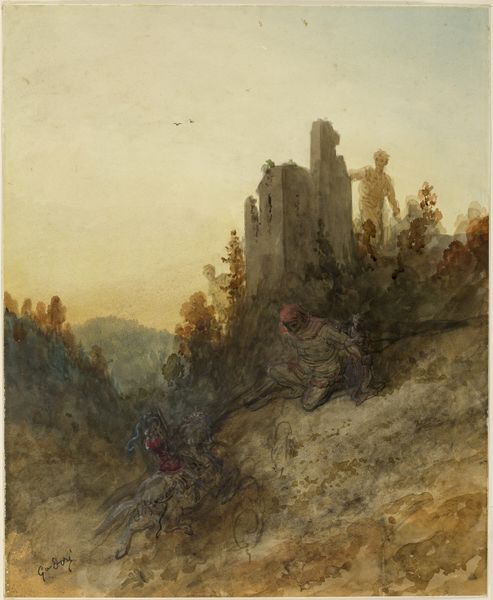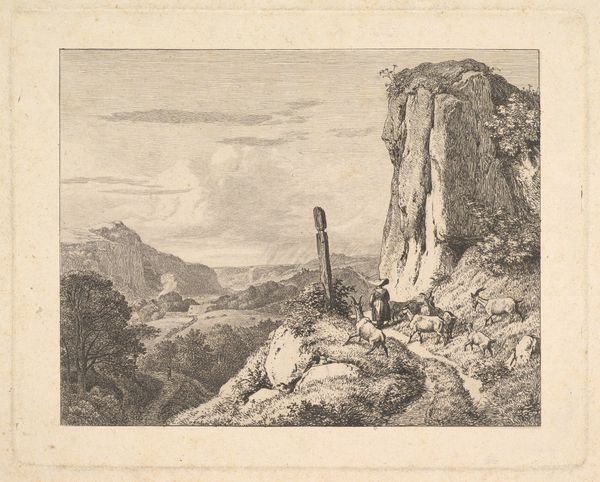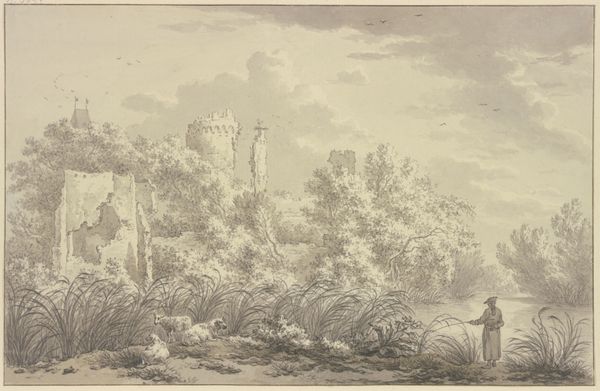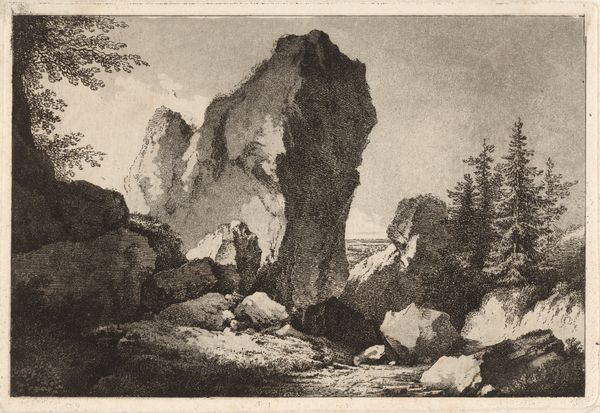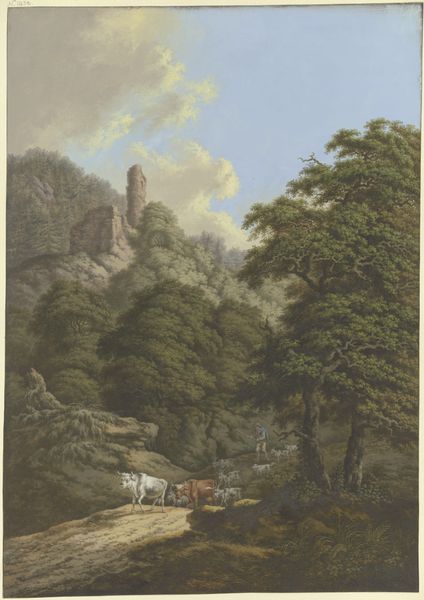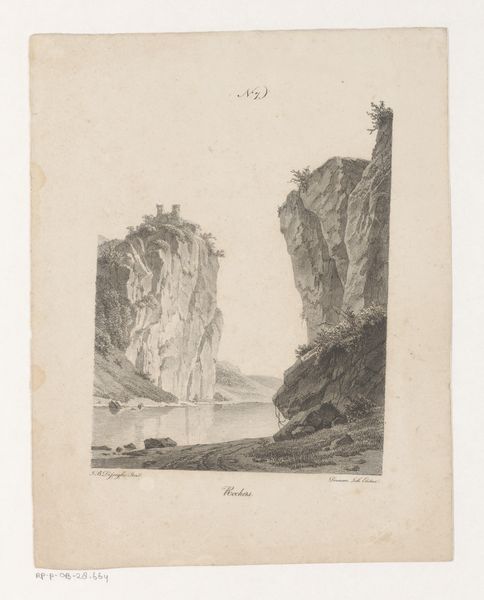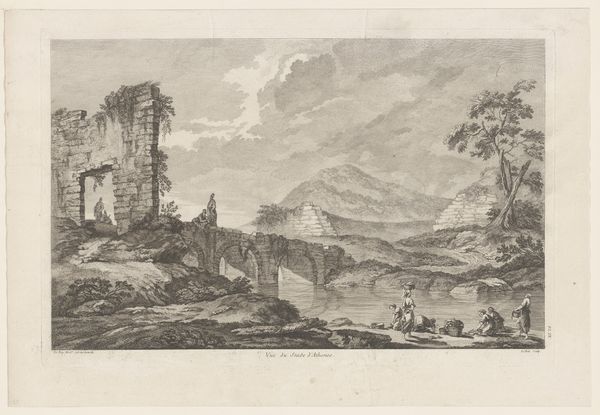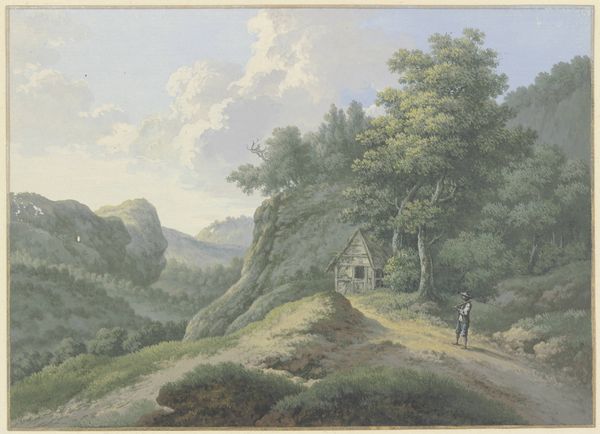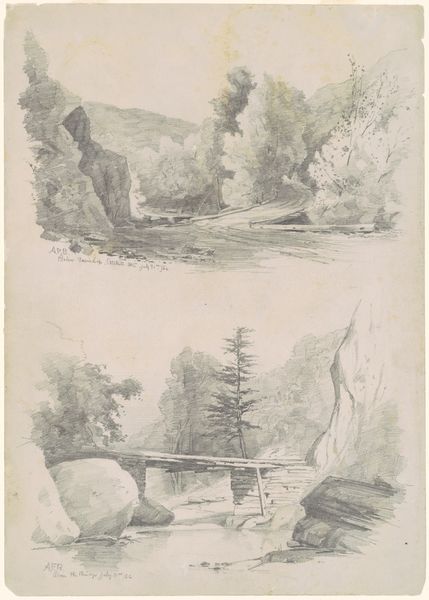
plein-air, watercolor
#
plein-air
#
landscape
#
watercolor
#
romanticism
#
watercolour illustration
#
genre-painting
#
watercolor
Dimensions: height 255 mm, width 201 mm
Copyright: Rijks Museum: Open Domain
Editor: Here we have "Landschap met twee ruiters bij een ruïne," or "Landscape with Two Riders by a Ruin," a watercolor work from around 1800-1900. I find the ruined architecture contrasted with the figures to be quite compelling. What elements stand out to you? Curator: The spatial relationships are what immediately capture my attention. Note how the artist uses layering—the ruin, the trees, and then the suggestion of mountains in the distance—to create depth. Editor: Yes, I see how those elements establish a strong sense of receding space. The muted color palette, too, helps create a sense of atmospheric perspective, doesn’t it? Curator: Precisely. The artist's mastery lies in creating this effect with watercolor, a medium often challenging for achieving such depth. Also consider how the verticality of the ruin, counterbalanced by the horizontal line of the distant hills, contributes to a balanced composition. Do you perceive any disruption to this visual balance? Editor: The positioning of the riders on the lower center-right does catch my eye. It provides a kind of grounding element within this otherwise expansive view. It keeps the ruin from dominating the entire picture plane. Curator: Exactly! This placement is not arbitrary. The artist invites our gaze into the scene, subtly directing our visual path. Note too, how the soft rendering of the forms softens the impact of the ruin. It almost feels integrated into the natural world, blurring the distinction between architecture and nature. Editor: So the riders aren't just there as a focal point but really engage with the setting? Curator: Absolutely. It’s this interplay of elements, and their considered arrangement, that elevates the work beyond a simple depiction to an exercise in visual composition and affect. Editor: I see what you mean. Examining how each component informs the whole gives a richer understanding of the artist's intent. Curator: Indeed. It allows for a deeper appreciation of the work's intrinsic qualities and overall artistic merit.
Comments
No comments
Be the first to comment and join the conversation on the ultimate creative platform.
